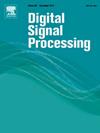DEDBNet:用于遥感物体探测的 DoG 增强型双分支物体探测网络
IF 2.9
3区 工程技术
Q2 ENGINEERING, ELECTRICAL & ELECTRONIC
引用次数: 0
摘要
随着遥感图像空间分辨率的提高,遥感图像的目标检测逐渐成为一项艰巨的任务。由于遥感图像中背景的复杂性和大面积性以及物体的多尺度性,提取的物体特征通常隐藏在背景的大量干扰信息中。然而,现有的许多背景弱化方法在实际应用中都面临着困难,容易产生较高的假阳性和假阴性。因此,遥感物体检测变得越来越具有挑战性。为了应对这些挑战,我们提出了一种新颖的背景弱化方法--高斯差(DoG)弱化背景(DWB)模块。然后,我们开发了一种双分支网络,名为 DoG 增强双分支目标检测网络(DEDBNet),用于遥感目标检测。基础分支网络负责检测物体,而 DWB 的分支网络则利用特征级关注修正检测到的物体。为了结合这些分支的特点,我们提出了两种新方法:用于矫正学习的带检测头的自互矫正器(SMCD)和用于通道关注的地图通道关注(MCA)。自校正器(SC)可对特征进行修改和整合,而互校正器(MC)可增强特征并进一步将其融合。我们在四个公开数据集(DOTA 的 mAP 为 0.836,DIOR 的 mAP 为 0.871,NWPU VHR-10 的 mAP 为 0.973,RSOD 的 mAP 为 0.975)上进行了大量实验,评估了我们提出的网络 DEDBNet。结果表明,在遥感图像方面,我们的方法明显优于其他最先进的物体检测方法。本文章由计算机程序翻译,如有差异,请以英文原文为准。
DEDBNet: DoG-enhanced dual-branch object detection network for remote sensing object detection
With the improvement of spatial resolution of remote sensing images, object detection of remote sensing images has gradually become a difficult task. Extracted object features are usually hidden in a large amount of interference information in the background due to the complexity and large area of backgrounds, as well as the multi-scale nature of objects in remote sensing images. Still, many existing background weakening methods face difficulties in practical applications and are prone to high rates of false positives and false negatives. Therefore, remote sensing object detection has become increasingly challenging. To address these challenges, a novel background weakening method called Difference of Gaussian (DoG) to weaken background (DWB) module is proposed. Then, we develop a dual-branch network, named DoG-Enhanced Dual-Branch Object Detection Network (DEDBNet) for Remote Sensing Object Detection. The base branch network is responsible for detecting objects, while the DWB's branch network corrects the detected objects using feature-level attention. To combine the features of these branches, we propose two new methods Self-Mutual-Correcter with Detect heads (SMCD) for corrective learning and Map Channel Attention (MCA) for channel attention. Self-Corrector (SC) enables modification and integration of features, while the Mutual-Corrector (MC) enhances the features and further fuses them. We evaluate our proposed network, DEDBNet, through extensive experiments on four public datasets (DOTA with an mAP of 0.836, DIOR with an mAP of 0.871, NWPU VHR-10 with an mAP of 0.973, and RSOD with an mAP of 0.975). The results demonstrate that our method outperforms other state-of-the-art object detection methods significantly for remote sensing images.
求助全文
通过发布文献求助,成功后即可免费获取论文全文。
去求助
来源期刊

Digital Signal Processing
工程技术-工程:电子与电气
CiteScore
5.30
自引率
17.20%
发文量
435
审稿时长
66 days
期刊介绍:
Digital Signal Processing: A Review Journal is one of the oldest and most established journals in the field of signal processing yet it aims to be the most innovative. The Journal invites top quality research articles at the frontiers of research in all aspects of signal processing. Our objective is to provide a platform for the publication of ground-breaking research in signal processing with both academic and industrial appeal.
The journal has a special emphasis on statistical signal processing methodology such as Bayesian signal processing, and encourages articles on emerging applications of signal processing such as:
• big data• machine learning• internet of things• information security• systems biology and computational biology,• financial time series analysis,• autonomous vehicles,• quantum computing,• neuromorphic engineering,• human-computer interaction and intelligent user interfaces,• environmental signal processing,• geophysical signal processing including seismic signal processing,• chemioinformatics and bioinformatics,• audio, visual and performance arts,• disaster management and prevention,• renewable energy,
 求助内容:
求助内容: 应助结果提醒方式:
应助结果提醒方式:


